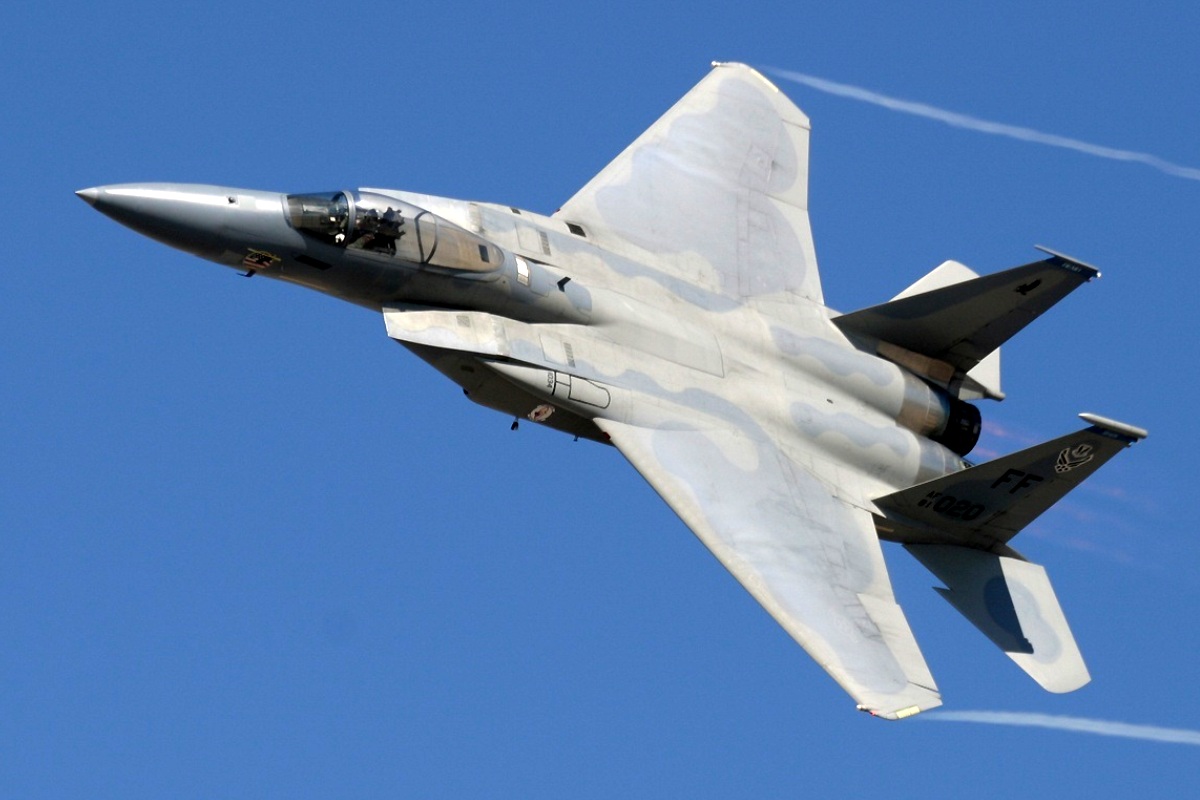F-15SE Silent Eagle (Four)
Sunday, May 27, 2012 |
| F-15SE Silent Eagle Wallpaper 4 Aircraft and Airplane. |
| image resolutions : 1200 x 800 |
| F-15SE Silent Eagle (Four) F-15SE Silent Eagle, jet, fighter, multirole, combat, Boeing, stealth, fifth generation, USA, demonstrator, aircraft, airplane, military, defense, attack, widescreen, wallpaper, photo, picture, image. The pair of Singaporean F-15SG fighters on static display here are the most advanced Strike Eagles ever built–but not for much longer because the huge order from Saudi Arabia that was confirmed recently allows Boeing to fit a fly-by-wire system. F-15SE Silent Eagle Wallpaper 4. Boeing confirmed to AIN here in Singapore this week that the company would be offering its full Silent Eagle package of stealth modifications to Korea for that country’s 60-plane KFX-3 requirement. It’s been quite a journey for the F-15 since December 2005, when Singapore chose the veteran design over the “fourth-generation” Dassault Rafale. At the time, that decision seemed to be motivated by political as much as technical considerations. But as Singapore defense minister Teo Chee Hean noted when the first F-15SGs arrived in Singapore in April 2010, “The F-15 is a combat-proven aircraft renowned for its weapon load, speed, range and agility…with state-of-the-art sensors, avionics and weapons.” The last of 24 F-15SGs will be delivered this year. Korea also preferred the Strike Eagle to the Rafale and has already bought 61 F-15Ks in two batches. The two Asian countries have sustained F-15 production long after the U.S. Air Force stopped buying F-15Es. The Republic of Singapore Air Force (RSAF) F-15SGs differ from the Korean F-15Ks in having an AESA radar–the Raytheon APG-63(V)3. Moreover, the navigation and targeting suite provided by Lockheed Martin is state-of-the-art, comprising a Lantirn navigation pod with terrain-following radar and forward-looking infrared, a Sniper XR EO/laser targeting pod and the AAS-43 Tiger Eyes infrared search-and-track system. F-15SE Silent Eagle Wallpaper 4. The U.S. package also included the joint helmet mounted cueing system (JHMCS) and a full suite of weapons, including Raytheon AGM-154 joint standoff weapons (JSOWs) and AIM-9X air-air missiles. The F-15SGs also have some Israeli content: an advanced integrated electronic warfare system provided by Elisra and–though not acknowledged by the company–an Elbit Systems mission computer. This allows Singapore to overcome U.S. restrictions on the reprograming of these sensitive equipments. The 84 new and 70 upgraded Saudi Strike Eagles confirmed last December in a record sale worth $29.5 billion will be designated F-15SA. They will have the same Raytheon AESA radar, General Electric F110 engines and some of the same weapons as the Singapore aircraft. The change to fly-by-wire flight control system (FBW FCS) will not be difficult to integrate, and brings the benefits of increased agility and reduced weight, Boeing vice president Asia Pacific Joe Song told AIN. The F-15SA will have a new digital electronic warfare system (DEWS) provided by BAE Systems. This consolidates the six black boxes of the old analog system on the F-15E/K into one, thus saving more weight. It also provides much greater capability, reliability and affordability. The FBW FCS and the DEWS will enter flight test at the end of this year, Song said. Other new features of the F-15SA will be two additional wing hardpoints for weapons, and dual-seat integration of the JMHCS. Turning to what may be the ultimate F-15–the Silent Eagle–Boeing first unveiled the set of modifications that can reduce the aircraft’s radar cross section (RCS) in March 2009. But unless the F-15SE has already been quietly marketed to Singapore, the first serious offer will be to Korea. The mods comprise a conformal weapons bay (CWB) created by modifying the aircraft’s existing conformal fuel tanks; RCS-reducing airframe coatings; and vertical tails that are canted 15 deg outward. Song told AIN that the entire F-15SE package will be offered to Korea for KFX-3. The CWBs have already been test-flown, and the V-tail configuration will be in the wind tunnel soon. The U.S. government has yet to sanction the offer of RCS coatings, but since the U.S. will also be offering the Lockheed Martin F-35 to Korea, Boeing is expecting approval. The F-15SE offer will also include large, 11- by 19-inch displays in each cockpit. Will Korea follow Japan and go for the F-35? Song believes that Boeing is in a strong position. “We’re the incumbents. The Koreans love their F-15Ks, and the Silent Eagle offers 85-percent commonality,” he claimed. The F-35 may not be available in time, he added, and the price is uncertain amid the current slowing of the production ramp-up. Boeing is currently negotiating a performance-based logistics contract with Korea for the F-15Ks. The company also gained kudos by building in-country a software upgrade facility that which the Koreans also use for their F-16s. Responses to the RFP for the KFX-3 are due in June, with a decision scheduled for October. The Eurofighter Typhoon is a third contender. F-15SE Silent Eagle Wallpaper 4 |
- F-15SE Silent Eagle (Wallpaper 1)
- F-15SE Silent Eagle (Wallpaper 2)
- F-15SE Silent Eagle (Wallpaper 3)
Labels: F-15SE Silent Eagle















